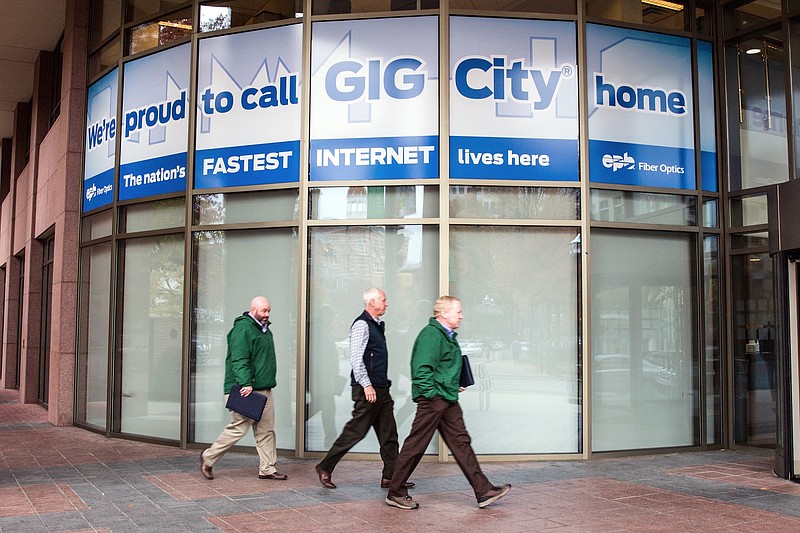You'd be hard-pressed to find another city the size of Chattanooga that gets as much media attention - national and international - as we do.
It's amazing, really. Of course, an overwhelming amount of that favorable press is focused on our fast internet speeds, provided by EPB. I'm sure someone has a running list of all the coverage. I don't keep a tally sheet, but it seems a new "hey, check out this cool town and its fast internet" article comes out every other week.
Though I haven't inventoried every article, it appears that most gig-themed features written by outside authors fall into one of two categories. The first type draws the lens back, placing the gig in a larger context of Chattanooga's four-
decades-long renaissance. The second sort zooms in on the city post-2010 (when the gig debuted), presenting the gig as the Big Bang to our city's rebirth.
Here are some examples.
Last week, the Montgomery Advertiser published an in-depth piece titled "What Montgomery can learn from Chattanooga's startup success." In it, it takes the long view at Chattanooga's renovation, tracing our budding innovation scene back to the civic conversations of the 1980s. Also, the Advertiser discussed the roles of public/private partnerships, nonprofits, grant-making foundations, business accelerators, and more to highlight the interweaving nuances that create the infrastructure supporting the gig's success.
In contrast to the Advertiser, the Daily Beast recently posted an excerpt from a new book called "Move Fast and Break Things." That excerpt's title is "Chattanooga Has Its Own Broadband - Why Doesn't Every City?"
I haven't a clue what the full passage from the book includes, but nowhere in the Daily Beast snippet is there any discussion of anything pre-gig. I'm not kidding, the city's recent history and the lesson from it is presented as follows: railroads and industry declined, then nothing, then the internet came along and saved the day, and now we should all have fast web speeds like Chattanooga.
Speaking of "saved," the Daily Beast article reminded me of one by Vice last year with the title (no joke), "The City That Was Saved by the Internet." In the nearly 5,500 words of that article, only half of a single sentence is dedicated to any civic work done in this city before EPB rolled out the gig.
So why does this matter?
We've always argued that while the gig has proven beneficial for Chattanooga, the fact that the gig has been so successful is because when it first rolled out in 2010, the civic infrastructure was already in place - thanks to decades of collective commitment to metropolitan renaissance - to make something of it. The pieces were there; the soil had been tilled.
There are nearly 100 municipally funded broadband services operating in the U.S. today. What makes Chattanooga different from the rest? Why are we held up as the gold standard on this front? Why isn't Randi Zuckerberg testing a tech-dining concept in, say, Morristown, Tenn., another gig town (no offense, Morristown)?
Because municipal revival and innovation can't be as simple as flipping the fast-internet switch. There's much more to it. And as other cities study Chattanooga, they need to be made aware that revitalization requires more than installing (very expensive, often publicly financed) fiber.
As a people who have long taken part in this town's rejuvenation, it's up to us to make sure the narrative is told accurately whenever we have the chance. I took a stab at it earlier this week in The Weekly Standard, and I hope you'll join me whenever you get the chance.
There's way more to Chattanooga's story than fast internet, and it goes back long before 2010.
Contact David Allen Martin at davidallenmartin423@gmail.com and follow him on Twitter @DMart423.

